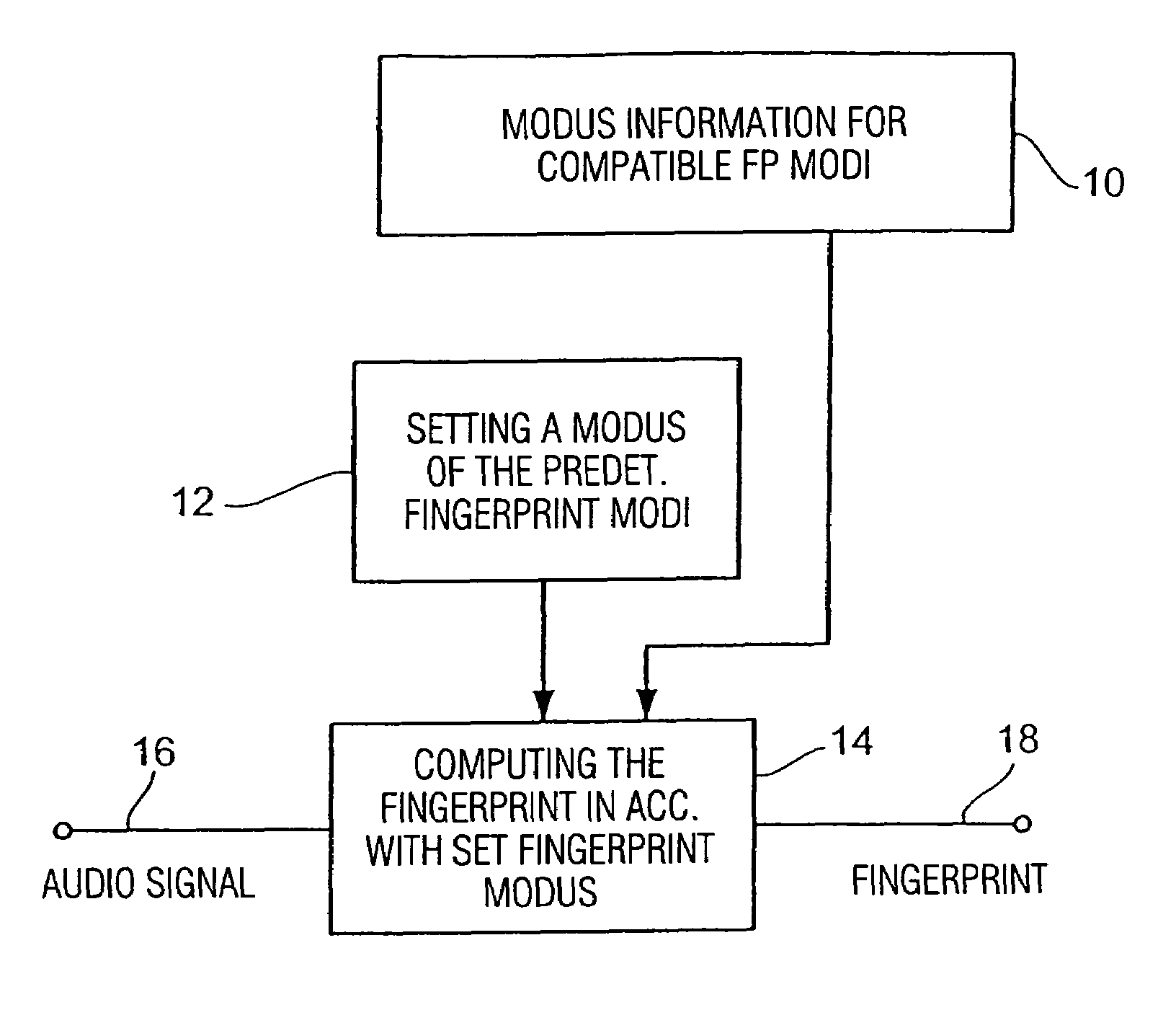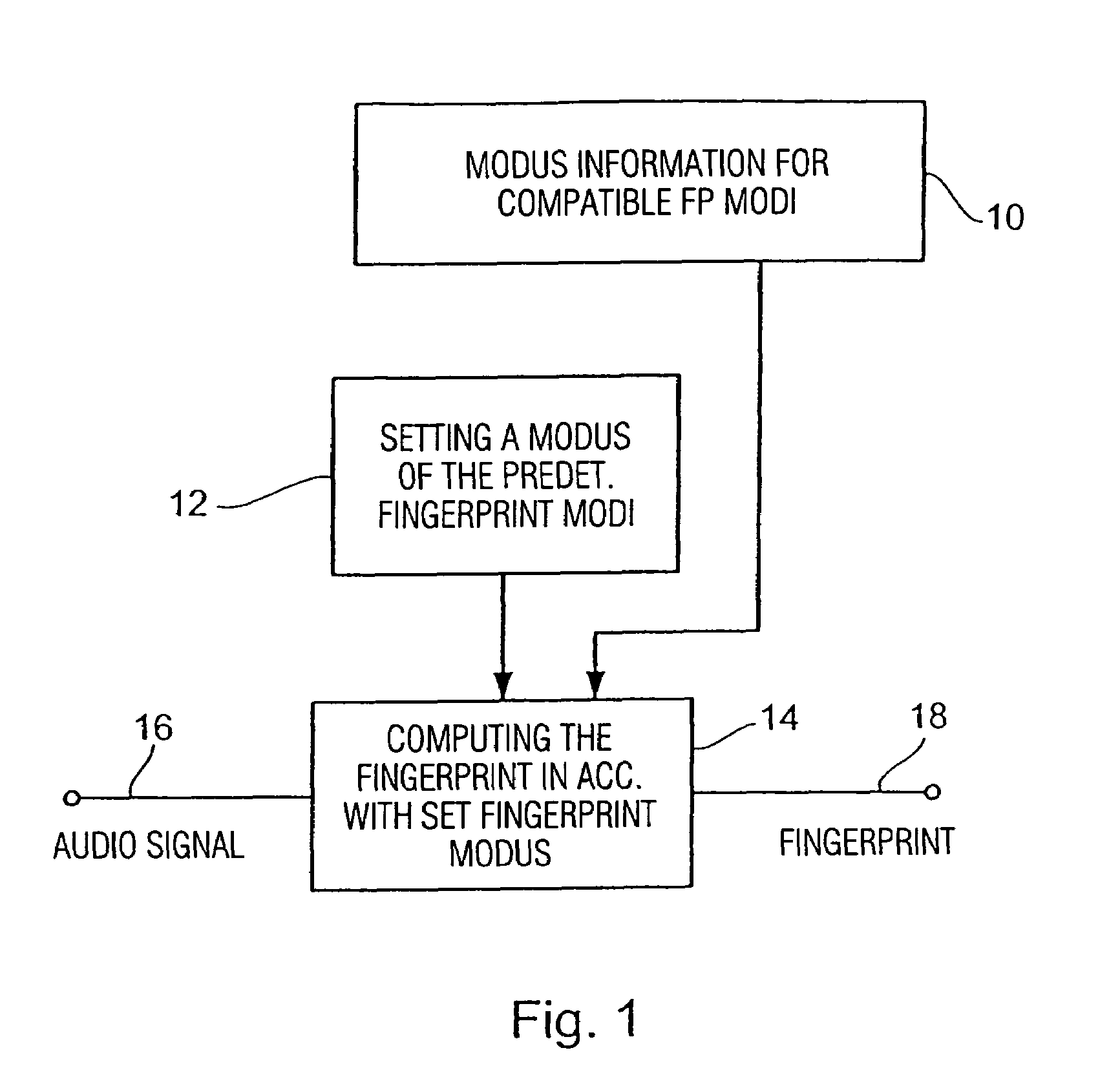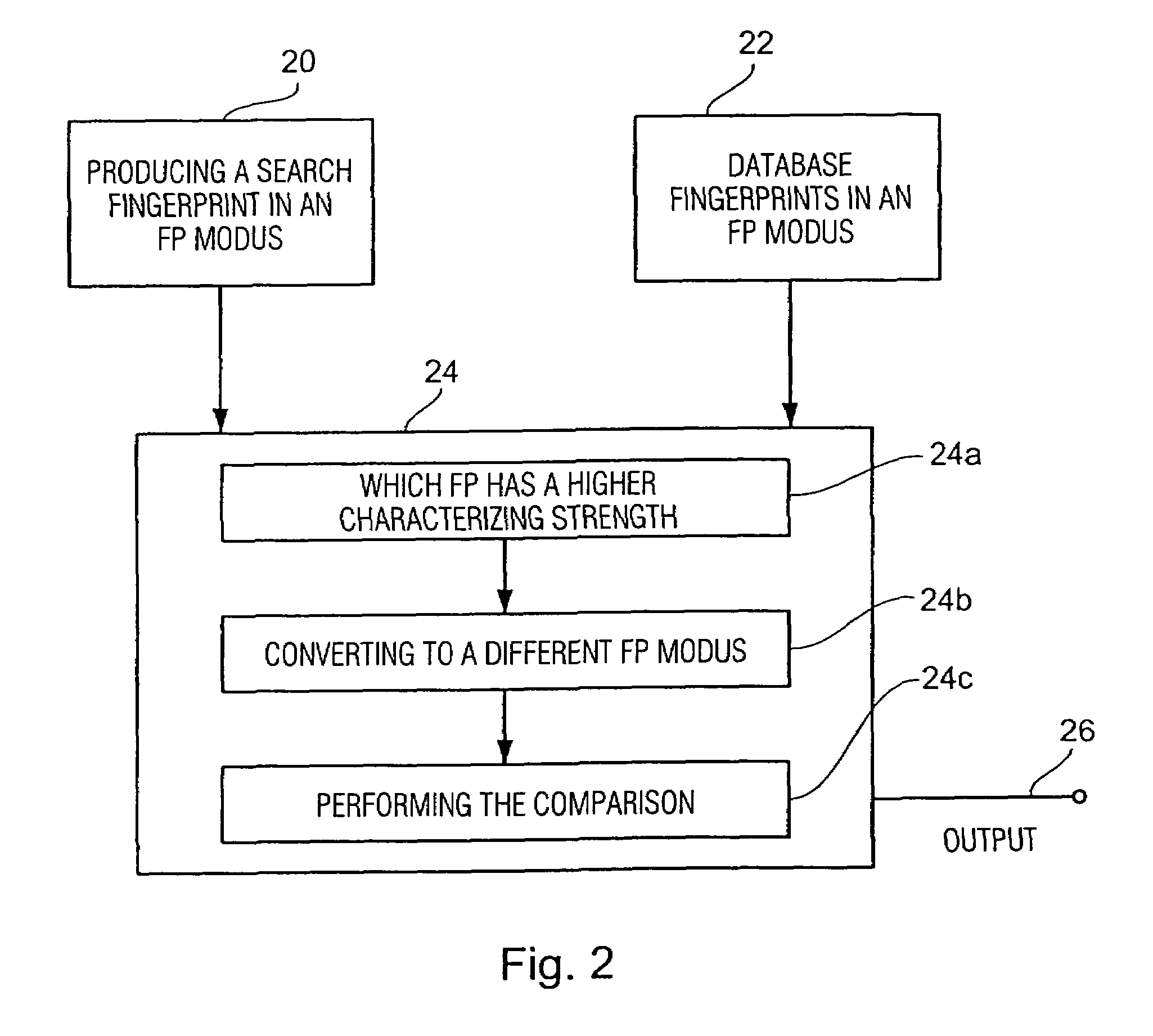Method and apparatus for producing a fingerprint, and method and apparatus for identifying an audio signal
a fingerprint and audio signal technology, applied in the field of characterizing or identifying audio signals, can solve the problems of large-scale violation, large conflict of requirements, and inability to store a very large number of fingerprints for a very large number of audio signals in a music recognition database, and achieve high characterizing strength, sufficient flexibility, and low cost
- Summary
- Abstract
- Description
- Claims
- Application Information
AI Technical Summary
Benefits of technology
Problems solved by technology
Method used
Image
Examples
Embodiment Construction
[0040]Reference shall be made below to FIG. 5, which shows a schematic overview of a pattern recognition system wherein the present invention may be advantageously used. In principle, in a pattern recognition system shown in FIG. 5 a differentiation is made between two operating modi, to be precise between the training modus 50 and the classification modus 52.
[0041]In the training modus, data is “trained in”, i.e. added to the system and subsequently included in a database 54.
[0042]In the classification modus an attempt is made to compare a signal to be characterized with the entries existing in the database 54 and to classify it.
[0043]The pattern recognition system includes means 56 for signal preprocessing, downstream means 58 for feature extraction, means 60 for feature processing, means 62 for cluster generation, and means 64 for performing a classification so as to make a statement about the content of the signal to be characterized, for example as a result of the classificatio...
PUM
| Property | Measurement | Unit |
|---|---|---|
| frequency | aaaaa | aaaaa |
| frequencies | aaaaa | aaaaa |
| time | aaaaa | aaaaa |
Abstract
Description
Claims
Application Information
 Login to View More
Login to View More - R&D
- Intellectual Property
- Life Sciences
- Materials
- Tech Scout
- Unparalleled Data Quality
- Higher Quality Content
- 60% Fewer Hallucinations
Browse by: Latest US Patents, China's latest patents, Technical Efficacy Thesaurus, Application Domain, Technology Topic, Popular Technical Reports.
© 2025 PatSnap. All rights reserved.Legal|Privacy policy|Modern Slavery Act Transparency Statement|Sitemap|About US| Contact US: help@patsnap.com



